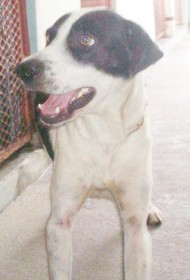Continued
Last week, we dealt with causes and the symptoms associated with bloat. We had mentioned that we are dealing with a dilation (an expansion) of the stomach or a volvulus (a torsion of the stomach on its own axis).
 In both cases, there is a gas build-up. Therefore, the treatment has to be directed at removing the life-threatening stomach distension caused by gas. But even before this is attempted, the dog’s condition has to be stabilized. Usually, by the time the owner decides to go to the vet, the dog is almost in a coma. The ailment develops rapidly – from the onset of the first symptom – within a day or two.
In both cases, there is a gas build-up. Therefore, the treatment has to be directed at removing the life-threatening stomach distension caused by gas. But even before this is attempted, the dog’s condition has to be stabilized. Usually, by the time the owner decides to go to the vet, the dog is almost in a coma. The ailment develops rapidly – from the onset of the first symptom – within a day or two.
How do we stabilize the dog’s condition? Well, your vet is the best person to do this. He/she will give the patient dextrose-saline solution and an injection of a corticosteroid (hydrocortisone, dexamethasone). Because toxaemia from an infection is always imminent, antibiotics are often administered every six hours.
Now we have to get rid of the gas. If it is just a gas build-up due to any of the seven causes I

mentioned last week, then we can insert a tube via the mouth into the stomach, thereby releasing the gas. If perchance (eg (i) because of a tumorous growth at the entrance or at the exit of the stomach, or (ii) there is a torsion of the stomach turning on its own axis) the tube cannot be passed into the stomach, we may have to relieve the distended stomach of the excess gas by inserting a large bore needle (16/18 gauge) into the stomach. You may use a fine rubber catheter which is passed through the 16/18 gauge needle. This is a very technical undertaking. Really, one should only be doing this, if there is absolutely no way of getting a veterinarian to help. It is advisable to shave the area (on the right side, 4 inches x 4 inches behind the last rib and boring with the needle through the skin into the distended stomach.
Of course, now that you have eased the dog’s distress, it gives you some time to get to the vet, so that he/she can determine the real underlying cause of the bloat. The treatment of that underlying cause must now begin. This means that if it was a bacterial fermentation problem, then that is what we must deal with. Similarly, if it is a cancerous growth that is the culprit, then it must be excised.
Finally, if the bloat develops as the result of a torsion (volvulus), then only surgery can help. You have to move quickly (within 24 hours). Only a vet can perform the surgery which focuses on twisting (unscrewing) the stomach back into its normal position. Several surgical techniques have been developed to counteract the recurrence of the torsion. Food (via the mouth) should not be offered to the dog until two days after the surgery. When you do begin to feed the dog, I would suggest you offer smaller quantities of a liquid diet four times during the course of the day.
Prevention
I had said that if there is a genetic predisposition to this disease, such dogs should not be mated, so as not to pass on their deficiencies to their offspring. If there is a tendency of the dog to display either the dilatation or the volvulus, then not much food should be offered at any one serving. It is much better to give the dog small quantities of food often (4x) during the course of the day. Also, do not give the dog large quantities of fluids to drink. Excessive exercise should also be avoided.
In concluding this topic, I should mention that pet owners who observe their animals with distended abdomens often ‘diagnose’ that their companion animals are suffering from ‘bloat.’ Usually, the swollen abdomen is due to a worm burden (especially in puppies) or a more serious ailment called ‘acites’ which is an accumulation of fluid in the abdomen. Remember always that the bloat condition results in a tautness of the abdominal wall much like a gas-filled balloon.
Enough for this week.
Please implement disease preventative measures (vaccinations, routine dewormings, monthly anti-heartworm medication, etc) and adopt-a-pet from the GSPCA’s Animal Clinic and Shelter at Robb Street and Orange Walk, if you have the wherewithal to care well for the animals. Do not stray your unwanted pets, take them to the GSPCA’s Clinic and Shelter instead. If you do not wish your pet to have puppies or kittens, you may exploit the GSPCA’s free spay and neutering programme. If you see anyone being cruel to an animal, or if you need any technical information, please get in touch with the Clinic and Shelter by calling 226-4237.





